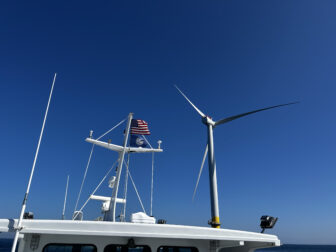At the end of the summer, Baltimore Circuit Court Judge Lawrence Fletcher-Hill ruled in favor of safe cities and healthy communities, stating that rail companies must disclose the routes of dangerous oil trains the public. His ruling affirmed that communities have a right to know if dangerous, explosive trains run through their neighborhoods. This lawsuit victory is one part of a growing national movement to stop dangerous oil trains from rolling through communities and spreading a network of dirty fossil fuels. Now, we have a clearer picture of where oil trains actually move throughout Maryland, and what we can do next to stop them!
Oil trains in Maryland enter from states that border us to the north, coming from major oil hubs like Newark and Philadelphia. Following Pulaski Highway (Rte. 40), oil trains roll past Havre de Grace and Aberdeen, and cross Herring Run into Baltimore. Trains then move through the heart of the city, following 26th street into Charles Village, turning south at Jones Falls. At that point, trains enter the Howard Street tunnel, passing directly under the Maryland Institute College of Art, the Department of Health and Mental Hygiene, Maryland General Hospital and the University of Maryland Medical Center, Lexington Market, and the Baltimore Convention Center. Trains exit the tunnel next to a Raven’s stadium parking lot, and wrap around the stadium as it travels south crossing Gwynns Falls, through Westport and then Brooklyn to a shipping terminal on the Fairfield peninsula.

Oil also comes in from the west, directly from Pittsburgh. Trains travel on the CSX railroad line through Cumberland, passing Harpers Ferry, and through Frederick County, where it meets the headwaters of the Patapsco River. It then follows the Patapsco through Monrovia to Ellicot City, where it enters the City through Morrell Park and Mount Winans, where it meets up with the northern rail line to the shipping terminal in Fairfield. Through research, we found out that this puts over 165,000 people in the blast zone in Baltimore. In Baltimore city, these trains predominately run through communities of color and low-income communities, disproportionately putting these people at risk, and is an environmental injustice.
In the past two years, over 100 million gallons of crude oil have been offloaded from oil trains in Baltimore. These numbers come from the State’s Oil Control Program, which is a regulatory agency that requires oil and rail companies to disclose how much oil comes through the state. But here’s the catch: the OCP requires oil companies to report only when over 1 million gallons of crude oil are unloaded from a train in Maryland. This means that if a train is carrying less than 1 million gallons of crude oil (about 35 tankers on a single train), it can be unloaded and stored in Maryland with no need to report this information to the public. It also means that oil trains passing through the state, on their way to oil hubs in the Northeast, for example, go unreported. The real amount of oil that travels through Baltimore and Maryland is still unknown, although it’s almost certain that it’s much, much more than what’s being reported.

The truth is, oil companies are still keeping the public in the dark. Because of this, CCAN will continue to push for public transparency and education surrounding oil trains, and work to make it as hard as possible for oil companies to ship their dirty, explosive fracked oil through the state. Ultimately, oil trains shouldn’t exist, the dangers are too high, and a federal ban should be instituted immediately. However, in Baltimore, we’re calling on the city council to pass a 4 year moratorium on new crude oil shipping terminals, to stop the alarming increase of oil trains in Baltimore. And as we continue into the new year, CCAN will work at the state and national level to make it harder for companies to ship out crude oil.
We know to stop runaway climate change we have to keep fossil fuels in the ground. It turns out, one key way to do this is stopping the transport of fossil fuels, making our fight against oil trains just as important. An excellent report that just came out from Oil Change International proves that point. Our recent legal victory is a great step forward in the fight against fracked oil, but it’s not enough.
If you are interested in volunteering with CCAN to stop explosive oil trains in our region, contact Jon Kenney at jon@chesapeakeclimate.org or 240-396-1985.






